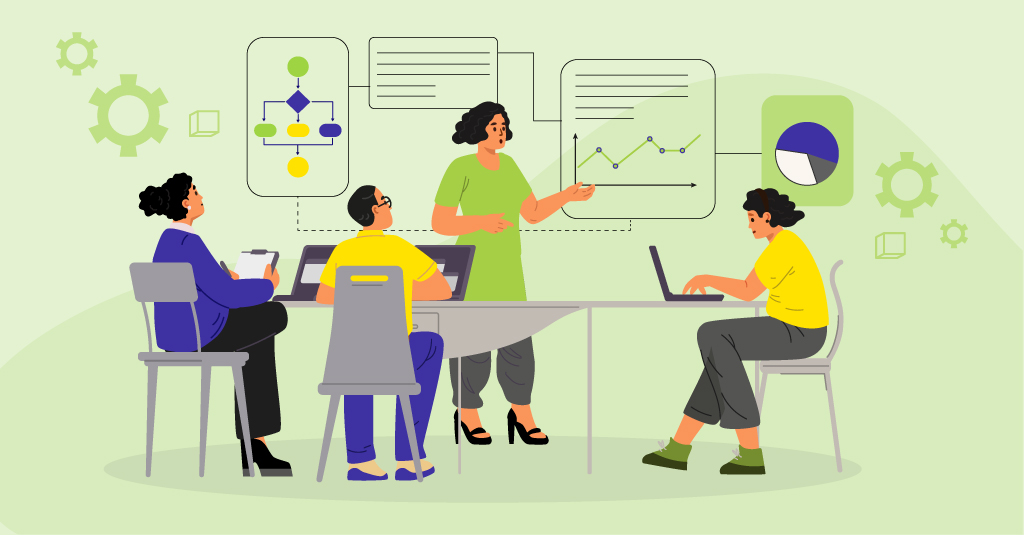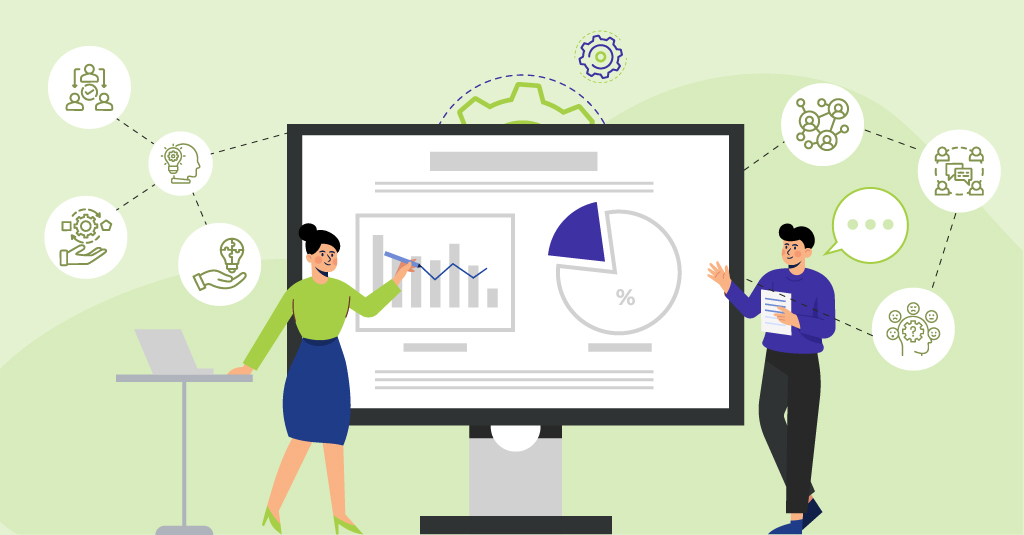Designing impactful learning doesn’t happen by chance; it takes intention, alignment, and a clear understanding of business goals. In our previous blog, we introduced two practical pathways to achieve this: building new learning programs from scratch or amplifying the impact of existing ones. We also addressed common challenges that organizations face when trying to embed impact into learning. In this chapter, we take the conversation further by sharing real-world case studies that demonstrate how thoughtful design, guided by our Impact Framework, can set the stage for measurable outcomes and lasting change.
Not every learning program comes with a ready set of measurable results. In fact, many of the most thoughtful learning designs begin by identifying the potential for impact, ensuring that if and when measurement becomes possible, the right metrics are in place. In this chapter, we share examples from different industries where our role was to design interventions aligned with the principles of our Impact Framework, with a focus on relevance, reinforcement, and real-world application.
While these case studies do not yet include full-scale impact measurement data, each one incorporates intentional design decisions rooted in metrics that could support future evaluation. The goal was always the same: to create learning experiences that are structured, purposeful, and built to support meaningful outcomes.
Case Study 1: Enhancing Mental Health Awareness at a Global Airline
Challenge
Employees at a global airline were not engaging with available mental health resources, often waiting until crises emerged. The organization wanted to raise awareness and encourage proactive support-seeking.
Our Approach
We designed a story-based digital learning experience that featured relatable personas, scenario-based decision-making, and integration of professional advice. The design was supported by a communication plan before and after launch to sustain visibility.
Framework Highlights
Discovery: Key stakeholders relayed important information to us to help us understand employee attitudes and barriers to using mental health services.
Strategy: The blueprint emphasized emotional engagement and awareness, aligning with the airline's goals of early intervention.
Spaced Interventions: Post-launch nudges were planned to reinforce key messages and promote behavioral shifts.
Measurement Outlook
The airline tracked metrics such as helpline call volume over time and engagement rates with support tools. These data points helped evaluate shifts in awareness and early action-seeking behavior. The real impact was a significant increase (3X) in the number of employees reaching out to the in-house helpline. This was a direct indication of the learning intervention having served as the right nudge to employees to be more self-aware and seek help at the right time.
Case Study 2: Building Supply Chain Excellence through an Academy Model
Challenge
A global cooling solutions company sought to transform its supply chain learning academy, focusing on role-specific competency gaps and structured upskilling pathways.
Our Approach
We collaborated on a modular design that moved learners through progressive skill levels while incorporating feedback loops and periodic checkpoints.
Framework Highlights
Discovery: A role-wise proficiency mapping helped uncover specific micro-skills to address.
Strategy: A learning journey was built to cover foundational to advanced capabilities.
Spaced Interventions: Pilot sessions were used to refine the design of learning interventions based on learner responses and manager input.
Measurement Outlook
Although final data was pending, metrics like pre/post proficiency scores, self-reported confidence levels, and alignment of course completions with business milestones were built into the solution design for future tracking.
Case Study 3: Skill Advancement in Retail through Gamified Microlearning
Challenge
At a global retail organization, employees were underperforming in key areas like order accuracy and customer interaction. The client needed a fun, engaging, and scalable solution to close these performance gaps.
Our Approach
We designed a gamified mobile learning experience with micro-activities tied to real challenges—payment handling, service recovery, and upselling techniques.
Framework Highlights
Discovery: Frontline feedback shaped the focus areas of each module.
Strategy: Short, quick challenges introduced learners to the gamified format.
Measuring Behavior and Performance Shifts: Monitoring key metrics such as order packaging time, and customer service ratings was proposed in the design.
Measurement Outlook
Metrics such as order accuracy, customer satisfaction, upselling, and scenario success rates were identified as indicators of potential behavior change. The initial observations after the launch were promising in a positive direction. These could serve as measures for improvements in overall customer service quality and operational efficiency once implemented at scale.
Case Study 4: Aligning Learning with Business Priorities in a Fashion House
Challenge
The company wanted to cultivate a growth mindset and align individual learning with key business objectives, especially innovation and customer experience.
Our Approach
We crafted a campaign of bite-sized learning modules embedded with reflection prompts and aligned to targeted business behaviors such as initiative-taking and collaborative problem-solving.
Framework Highlights
Discovery: We conducted a comprehensive series of focus groups for behavior-mapping to correlate desirable traits with business goals.
Strategy: Pre- and post-module assessments were designed to capture shifts in learner perception.
Feedback Systems: Data mechanisms were designed to track patterns in engagement and application.
Measurement Outlook
Though still in its early stages, we established qualitative indicators such as reflective journaling quality and idea generation frequency to capture early signs of impact. Journaling prompts were designed to surface how learners applied or could apply new behaviors, allowing us to track mindset shifts and engagement with business priorities over time.
We also recommended collecting manager feedback on observable changes, such as increased ownership, initiative, and participation in team problem-solving, as these behaviors aligned directly with the desired growth mindset and client service excellence. This added a layer of contextual, role-specific insight into behavioral progress.
To strengthen the feedback loop, we proposed performance-adjacent metrics such as efficiency improvements, turnaround times, and customer satisfaction ratings as longer-term indicators. While the data wasn’t yet available, this multi-layered approach was built to support ongoing measurement and tie individual behavior changes.
Designing with Measurement in Mind
Each case study reflects how the Impact Framework can guide not just what we should do, but also how we think about relevance, readiness, and results. In the final chapter, we bring this full circle, exploring ways to embed this mindset long-term and ensure that learning continues to deliver value across time.
These case studies reflect the importance of designing with measurement in mind, where every learning solution is tied to real behaviors, business priorities, and future impact opportunities. To explore more tools, examples, and step-by-step strategies for driving learning that delivers measurable business results, download our eBook Beyond Training: An Actionable Guide to Learning That Delivers Measurable Business Impact.
















